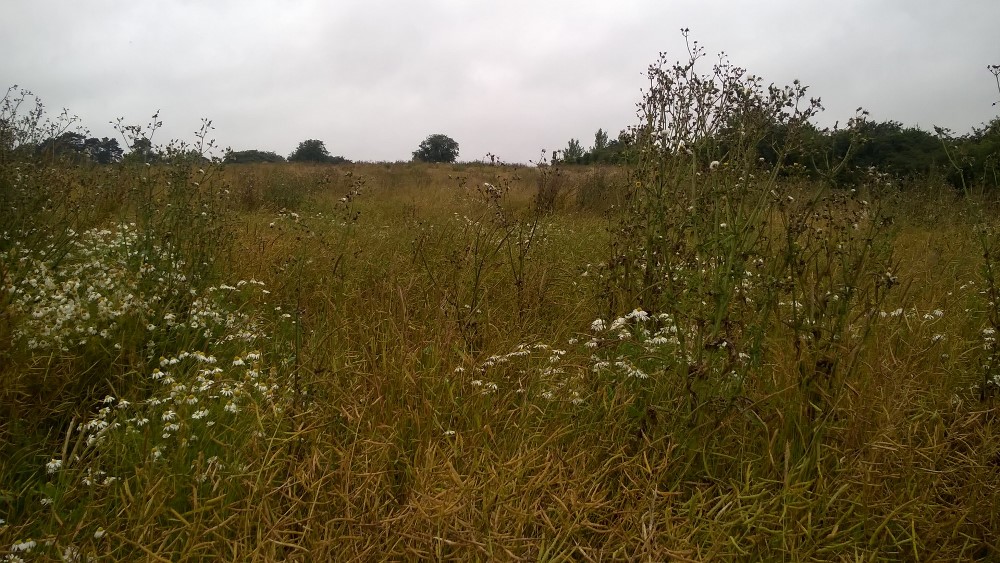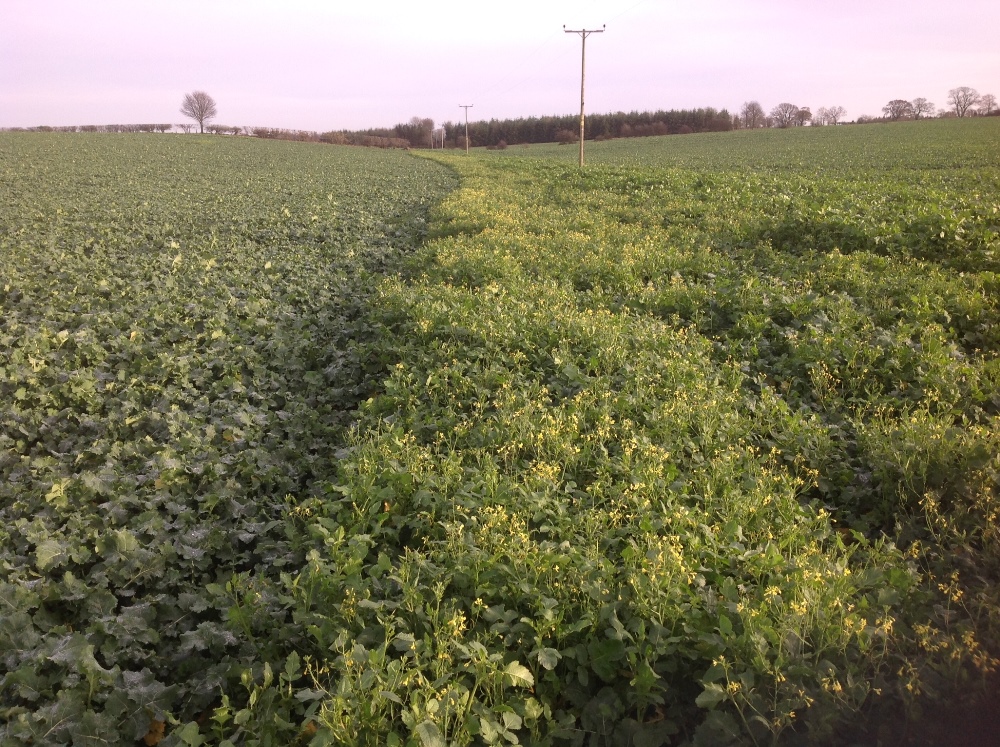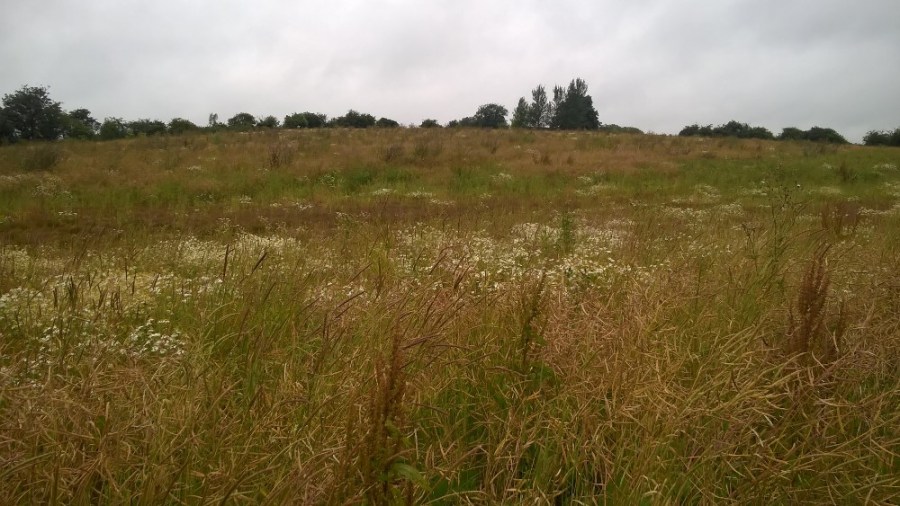Weedy crops could be affecting your rapeseed’s oil quality. CPM finds out more about the problem and a possible solution.
“The lower levels of erucic acid contamination could be attributed to common weeds because of their own elevated erucic oil profiles.”By Lucy de la Pasture
It’s fair to say that it hasn’t been a great year for weed control, judging by the number of different weed species sticking their heads above crop canopies around the country.
Excuses are easy to come by – it wasn’t the best autumn for timeliness and blackgrass has a whole story of its own. But with thoughts turning to oilseed rape planting this month, the effect of weeds on oil quality is something growers can’t afford to ignore, believes Agrii’s David Leaper.
Earlier this summer, rapeseed crushers announced that growers would be penalised by up to £100/t for samples high in erucic acid. Under UK and EU legislation, oils and fats that are used for foods can contain no more than 5% erucic acid, reflected in the 2% maximum limit for erucic acid in ‘00’ OSR set out in the Federation of Oils, Seeds and Fats Association (FOSFA) 26A contract, above which samples can be rejected.

Earlier this summer, rapeseed crushers announced that growers would be penalised by up to £100/t for samples high in erucic acid.
The problem with unusually high spikes in erucic acid contamination only appeared at the tail end of the intake of last year’s crop, explains Angela Bowden of the Seed Crushers and Oil Processors Association (SCOPA). The reason for this is still being investigated, with no apparent correlation in test results with any particular area or variety. SCOPA have also ruled out cross-pollination types as a possible cause and say there’s no apparent link with weed seeds either.
According to David Leaper, who has been researching the reasons behind high erucic acid levels, the evidence suggests that the UK has always supplied some ‘00’ crops above the FOSFA 26a threshold because there are no specific pre-crush checks. However, it was probably sufficiently diluted in the crush so that it was never detected in the final product above threshold levels, he reckons.
That’s something that’s all about to change, says Angela Bowden. Testing using near infra-red technology on intake is the aim of SCOPA members for this season’s oilseed crops, with crushers having either installed or very close to installing testing to detect erucic acid levels in crop samples.
This would allow rejection before going to the crush plant, says David Leaper, but he does have some reservations. “If the technology is applied only at the point of tipping, then it could be disastrous with rejections back to farm or the merchant’s store and no market for it. This needs to be thought through very carefully.”

David Leaper is concerned that rejections at the point of tipping could be disastrous if it led to OSR going back to farm or the merchant’s store with no market for it.
The situation means that the uncertainty for harvest 2016 continues and particularly for companies who take rapeseed into store, believes Paul Rooke of AIC.
“Members may need to consider how they address the increased potential for risk in areas such as their intake terms and conditions, retention of intake samples, both at store and on farm and possible greater prior knowledge of the history of crops being put into store.”
While the inadvertent mixing of HEAR and ‘00’ crops in the supply chain is a potential source of erucic contamination, avoiding other potential on-farm sources of contamination remains a priority for growers, believes David Leaper. He points to a scientific study into the causes of erucic acid problems that may help to demystify what has been happening this season.
Weeds and volunteers
In the paper by Leaper DJ and Melloul S, The impact of Clearfield production system on the quality of winter oilseed rape oil, the authors conclude that erucic acid contamination came from two sources: weeds and volunteer HEAR.
“We have data on the incidence of erucic contamination across a large number of UK and European commercial HOLL crops where typically around 2% of crops exceeded the erucic acid threshold of 2%.
“These crop would be generally cleaner than ‘00’ OSR because they were often grown on virgin land or in more open rotations,” he explains, adding “It’s reasonable to anticipate that erucic acid contamination may be even higher in the general OSR crop.”
It’s possible that this low level contamination is coming from brassica weeds, like runch and charlock, he believes, setting out his reasoning.
“Back in the late 2000s, the German market switched out of HEAR and moved into HOLL OSR and we saw a definite spike in erucic acid contamination. This could be
attributed directly to HEAR volunteers,” he says. “In the UK, HEAR is implicated, but historically this market has been a real niche.
“Also, farmers who grow HEAR tend to put it across the farm rather than rotating between HEAR and ’00’ OSR and this is still largely the case. There has been some expansion of the HEAR acreage recently and it remains attractive to farmers looking for that extra margin.”
So given that HEAR volunteers aren’t likely to be the main culprits in the UK, why is erucic acid contamination an increasing problem?

Open autumns have favoured weed growth and there’s been a lack of frosty weather leading to bigger weeds and variable performance from bifenox chemistry.
“The UK has always had slightly higher incidence of erucic acid than elsewhere in the EU,” explains David Leaper. “Where very high levels of erucic acid are being detected, this is more likely to be HEAR volunteers or inadvertent HEAR crop contamination. The lower levels of erucic acid contamination could be attributed to common weeds because of their own elevated erucic oil profiles.” (see table on pxx).
He reckons this happens because of a much closer OSR rotation in the UK and the consequent build-up of the problem weeds.
“For the past three years we’ve seen an increasing problem with brassica weeds. The reason for this is simple – we’ve had very open autumns which favour weed growth and a lack of frosty weather. This has given us bigger weeds and we’ve seen very variable performance from bifenox chemistry because big weeds are more difficult to control in these conditions,” he explains.
FOSFA26A specification
The big issue is that this autumn, pressure from these weeds is likely to be worse than last autumn, believes David Leaper. “The crushers have their FOSFA26A specification and have contractual right to reject crops contaminated with erucic acid over the 2% threshold, but they also need to be pragmatic especially where levels are at or just out of specification.”
On top of that, the weedy crops that have been commonplace over the past few seasons tend to lead to more weeds to tackle in subsequent seasons. So that means getting rid of broadleaf weeds is absolutely crucial, he notes.
“In recent years there’s been a definite move towards post-emergence herbicide applications in OSR because growers want to be sure that the crop has established before spending a lot of money on it,” he says.
“Worries over establishment this autumn, especially in flea beetle areas and slug-prone soils, are likely to be even worse. But given the limitations of the post-em herbicide options available, the reticence over using pre-emergence herbicide and delaying application means crops are getting dirtier.
In David Leaper’s mind, bifenox continues to be a useful tool but there’s another and that’s the Clearfield system, he believes.
Clearfield system
“The Clearfield chemistry requires a herbicide-tolerant variety. The market uptake of this ‘herbicide system’ has been slow because, until now, the varieties have been relatively low yielding and poorly adapted to the UK environment,” he explains.
Uptake of Clearfield has been much more positive in Eastern European countries, where they previously relied on a clopyralid application in the spring for weed control, with pretty poor results. As a result, breeding efforts were concentrated on the semi-dwarf hybrids favoured in these regions.
“We now have better adapted UK types which are more vigorous, higher yielding and with better disease resistance. The newer varieties are yielding at a similar level to DK Expower, at about 5-6% behind the current highest yielding varieties,” he says.
“As a result there’s been a noticeable shift in attitude towards Clearfield, with more growers showing interest this autumn,” he says.
This harvest, 15,000ha of Clearfield varieties were in the ground but seed sales for the 2016 planting are up, so much so that the Clearfield share of OSR area is likely to increase twofold or more, according to estimates.
So what’s driving the change? A combination of agronomic and financial factors, believes David Leaper, explaining increasing concerns about establishment mean growers don’t want to spend upfront on early herbicides without the certainty they have a crop. But it’s also because confidence has grown with the Clearfield system.

This harvest, 15,000ha of Clearfield varieties were in the ground but seed sales for the 2016 planting indicate their share of the OSR area is likely to double.
“Under the system, herbicide is applied later post-emergence, when the crop has established and when the autumn flush of weeds is through. It’s rarely used as a single shot approach, more often being sequenced with metazachlor and/or a graminicide, where early removal of cereal volunteers is necessary. It means growers can spray what they see in front of them, with reliable results yet they still have the flexibility to use non-Clearfield herbicides if they wish.”
As well as advances in breeding and an expanded choice of varieties, many of the early reservations about adopting a Clearfield system have been resolved. One of those was the use of one of the active ingredient, imazamox, in OSR because it’s an ALS inhibitor – a group of chemistry normally limited to cereals.
Another worry was a Clearfield legacy of herbicide-tolerant volunteers but this has proved not to be a problem. “Because of the chemistry available in wheat crops and the degree of stacking of pre- and peri-emergnce products we’re commonly using, I’m yet to see a Clearfield volunteer in a wheat field,” says David Leaper. “There are fewer options for good OSR volunteer control in sugar beet and beans but generally it’s wheat that follows the OSR crop in the rotation anyway.”
Herefordshire AICC agronomist, David Lines, is encouraging many of his growers to adopt the Clearfield system, especially where they’re looking to grow specialist cultivars of OSR.
“I was looking at some Bayer trial plots where they hadn’t drilled any seed in one plot yet a population of OSR had emerged to give a cover of around 10 plants/m². It illustrates the background population of OSR that we historically have in the seedbank and I see Clearfield as being a good way to clean these volunteers up,” he says.
“Volunteers are producing off-types in commercial crops and there’s no way of knowing how their oil quality will impact on the sample. But it’s not just contamination of oil quality I’m concerned about. Volunteers and brassica weed species host club root, which seems to be an increasing problem. Clearfield chemistry helps control both volunteers and brassica weeds in a crop where otherwise we’re struggling for reliable herbicide options,” says David Lines.
Top-yielding Clearfield varieties
DK Imperial (Yield 103) from Monsanto
The latest Clearfield hybrid from DeKalb. A tall hybrid with average yields but a relatively high oil content. Suitable for all soil types and regions but unlikely to go North of Yorks. Drill in the main drilling window but, due to its moderate speed of development, avoid late drilling. Grows into a very tall hybrid with good standing characteristics and responds well to PGRs especially on higher potential sites. Relatively late to flower and mature. Excellent disease resistance and the first Clearfield hybrid to include the RLM7 stem canker resistance gene. Good light leaf spot resistance (6) is a bonus as is the pod-shatter resistance as this will be a useful trait to minimise Clearfield volunteers.
DK Imagis (Yield 103) from Monsanto
Hybrid on the AHDB Cereals and Oilseeds Recommended List, North region. Continental type with relatively slow speed of development, later flowering and maturity. Reasonable LLS resistance but weak on phoma (5). Pod shatter resistant.
PT228CL (Yield 101) from Pioneer
Pioneer’s highest gross output hybrid with high oils. Data limited to Pioneers own European trials and average disease resistance with 4 rating for stem canker and 5 for LLS.
Veritas (Yield 102) from DSV
A hybrid variety, DSV claims strong development before winter. RLM7 gene gives good protection against phoma (8) and a good LLS score (7). Average gross output with no information on oils. Very late maturity.
Comments provided by David Leaper. Yield data according to Agrii trials.




